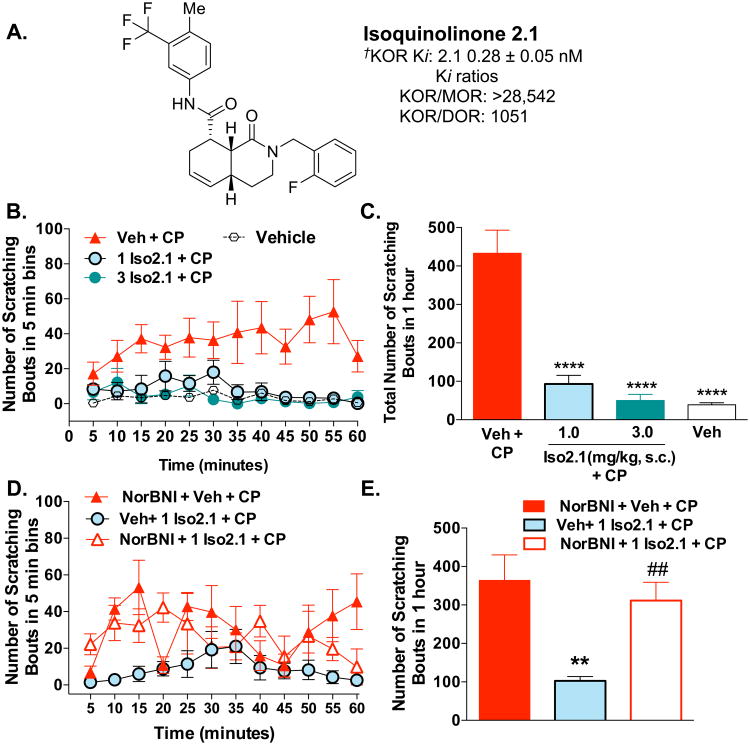Figure 6.
A KOR agonist that is biased towards G protein signaling over βarrestin2 recruitment suppresses chloroquine phosphate-induced itch. (A). Isoquinolinone 2.1 (Iso2.1) is a highly selective KOR agonist; †affinity measures for radioligand binding are from Zhou et al., 2013. (B) Iso2.1 (1.0 and 3.0 mg/kg, s.c.) administered 10 minutes prior to CP (40 mg/kg, s.c.neck) suppresses the scratching response compared to vehicle: two-way ANOVA for dose (p < 0.0001); n = 5 - 6. (C) Significance is also revealed by the comparison of the sum of the response over the hour test session: one-way ANOVA, ***p < 0.001, ****p < 0.0001 Bonferroni post hoc analysis; n = 5-6). (D, E), Twenty-four hour pretreatment with KOR antagonist NorBNI (10 mg/kg, i.p.) blocks the antipruritic effects of Iso2.1 (1 mg/kg, i.p.) on CP-induced itch. (D) Effect of Veh + Iso2.1 + CP vs. NorBNI + Iso2.1 + CP: two-way ANOVA (p < 0.0001). There were no differences detected between vehicle pretreatment and NorBNI pretreatment groups (p > 0.05). (E) The comparison of the sum of the responses over the hour test session reveals suppression of CP-induced itch by systemic Iso2.1 injection and reversal of Iso2.1 effects by the 24 hour pretreatment with systemic NorBNI: one-way ANOVA, NorBNI + Veh + CP vs. Veh + Iso2.1 + CP, **p < 0.01; NorBNI + Iso2.1 + CP vs. Veh + Iso2.1 + CP, #p < 0.05, student's t-test. Data are presented as the mean ± SEM.

